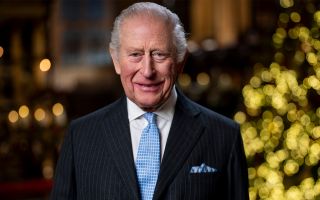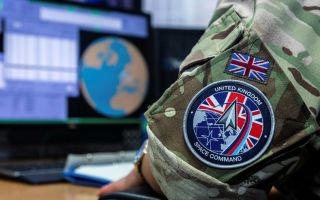Chelsea Pensioner Receives Aircrew Brevet
On Friday 18th July Chelsea Pensioner Sergeant Peter Carrie, a Second World War Army and RAF Bomber Command Veteran finally added a flight engineer brevet to his distinctive scarlet uniform. Sergeant Carrie, born in Dundee in 1915, has the unique distinction of being the only Chelsea Pensioner eligible to have a Bomber Command Clasp (instituted last year) because as well as his Army service he served in the Royal Air Force in the Second World War as a flight engineer on Lancaster bombers. Indeed it was only when he received his Clasp in April this year by General Sir Redmond Watt, the Governor of the Royal Hospital Chelsea that staff realised Sergeant Carrie was ‘improperly dressed’ without his flight engineer brevet, which he was eligible to wear on his uniform along with his medals.
However on Friday that was put right by Air Marshal Sir Stephen Hillier who took time away from his job as the Deputy Chief of Defence for Military Capability to present Sergeant Carrie with his missing brevet.
Air Marshal Hillier said, “Sergeant Carrie is extraordinary.” He added, “The valour, the courage and commitment men like Sergeant Carrie showed during WWII was just exceptional, in Bomber Command, in the mission that they did, and sustained throughout that war.”
Sergeant Carrie served with 75 (New Zealand) Squadron and survived many dangerous bombing missions against Nazi Germany including those on Hamburg and Wesel. Asked why he was in a New Zealand Squadron Sergeant Carrie said, “The Kiwis came over but were short of men on some squadrons so I joined them.” He enjoyed his time with the New Zealand crews and recalled fondly, “They used to have drink sent over from home, and after every mission we’d have a wee shot.” But the Squadron history tells of another reality.
75(NZ) Squadron flew more missions than any other Allied Heavy bomber squadron and in doing so suffered the second highest casualties of all the Allied Squadrons. Sergeant Carrie returned home from perilous missions often with his Lancaster damaged by enemy anti-aircraft fire. The RAF Bomber Command campaign in which Sergeant Carrie fought saw the loss of more than 55,000 aircrew out of 125,000; a staggering death toll of nearly 45%.
Astonishingly Mr Carrie’s RAF service came after he had already served in the Army, which he had joined in 1934 aged 19. He was posted to the Khyber Pass on the North West Frontier (the western frontier of present day Pakistan) where before the Second World War he saw active service and was wounded. He later saw active service in France at the beginning of the Second World War before being badly wounded and evacuated from Dunkirk in 1940. His injuries prevented him from continuing his service with the Army but undeterred he joined the RAF’s Bomber Command in 1943 and served until demobbed in 1946.
Picture: Crown Copyright 2014 / Ministry of Defence









